Day 2 :
Keynote Forum
Takeo Ishii
Yokohama Daiichi Hospital, Japan
Keynote: Duplex ultrasound for the prediction of vascular events associated with arteriovenous fistulas in hemodialysis patients
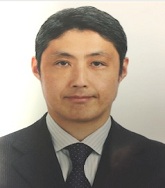
Biography:
Takeo Ishii has completed his PhD from Jikei University School of Medicine, Tokyo. He is now the Co-director of Yokohama Daiichi Hospital, a central hospital of Zenjinkai Group. Zenjinkai Group is consisting of 51 hemodialysis clinics and health check-up centers. He is also a Research Fellow of Department of Medical Science and Cardiorenal Medicine, Yokohama City University, Graduate School of Medicine. He has received award from Japanese Society of Nephrology.
Abstract:
Objective: Aim of this study is to determine if duplex ultrasound (US) for arteriovenous fistulas (AVFs) can predict vascular events (VEs; thrombosis and stenosis).
Methods: Duplex US were performed for vascular access evaluation in 2557 maintenance hemodialysis (HD) patients between October 1, 2013 and March 31, 2016. Of these patients, 2184 patients were finally included in this study. AVF dysfunction was assessed using the brachial artery blood flow volume (Qa; mL/min), arterial blood flow resistance index (RI), and residual diameter of the fistula vein (RD; mm). Proximal, midpoint, and distal aspects of the fistulas were measured. The baseline measurements were the US assessments, and the endpoint was VEs requiring vascular access intervention therapy or vascular surgery. Associations of US findings and VEs were assessed with receiver operating characteristic curve analysis, log-rank analysis, and multivariate cox hazard models.
Results: The mean Qa was 772.8±441.4 mL/min; RI, 0.56±0.1; and RD, 2.37±1.0 mm. The optimal Qa cut-off point was calculated as 581.5 mL/min, RI cut-off as 0.56, and RD cut-off as 1.85 mm. VEs were more frequent in patients with a Qa <581.5 mL/min than in those with a Qa>581.5 mL/min (p<0.001). In multivariate analysis, Qa, ferritin, transferrin saturation and warfarin use were significantly associated with VEs.
Conclusions: US evaluation of AVFs in HD patients along with measurement of brachial artery blood flow is a simple method to predict the risks of thrombosis and fistula dysfunction.
Keynote Forum
Daniel Batlle
Northwestern University Feinberg University School of Medicine, USA
Keynote: ACE2 as a potential therapeutic agent for kidney disease
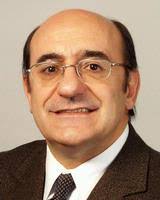
Biography:
Dr. Daniel Batlle received his MD from the University of Barcelona, Spain. He completed medical residency and later fellowship training at the University of Illinois in Chicago, Illinois. After this he joined the Division of Nephrology at the University of Illinois as a Faculty member and later moved to Northwestern University Medical School also in Chicago. Dr. Batlle was Chief of the Division of Nephrology and Hypertension from 1992 to 2009 and is currently the endowed Earle, DelGreco Levin Professor of Nephrology and Hypertension at this Institution. His main focus in research is the renin angiotensin system as it relates to hypertension and diabetic kidney disease. His research includes the design of novel forms of recombinant ACE2 that are currently being tested experimentally.
Abstract:
Angiotensin-converting enzyme 2 (ACE2) is a carboxypeptidase that potently degrades angiotensin II (Ang II) to form Ang-(1-7). Previous studies showed that injection of the enzymatic ectodomain of recombinant ACE2 (rACE2) markedly increasases circulatory levels of ACE2 activity, and effectively lowered blood pressure in Ang II-induced hypertension. However, due to the short plasma half-life of rACE2, its therapeutic potential for chronic use is limited. To circumvent this problem, we generated a chimeric fusion of rACE2 and the immunoglobulin fragment crystallizable (Fc) segment to increase its plasma stability. This rACE2-Fc fusion protein retained full peptidase activity and exhibited greatly extended plasma half-life in mice, from less than two hours of the original rACE2, to over a week. A single injection of 2 mg/kg rACE2-Fc elevated the overall Ang II-conversion activities in blood by up to 100 fold and lasted for over a week. Consequently, only rACE2-Fc, but not rACE2 injection, achieved sustained blood pressure control in response to a bolus infusion of Ang II. In the RenTgMK transgenic mice driven by the expression of synthetic renin cDNA, weekly injections of rACE2-Fc effectively lowered plasma Ang II and blood pressure. In addition the rACE2-Fc ameliorated albuminuria, and reduced kidney and lung fibrosis. These results show that this chimeric fusion strategy for rACE2-Fc can be suitable for future development of new RAS-based inhibition therapies.
Keynote Forum
Hesham Abdelkawy Hassan
DaVita Azizia South Riyadh, Saudi Arabia
Keynote: Assessement of the LA myocardial function and size using tissue doppler imaging echocardiography in end-stage renal disease patients on regular hemodialysis

Biography:
Hesham Mohamed Hussien Abdelkawy Hassan is an Egyptian Physician. He has completed his MD at Cairo University in 1994; Master’s degree in Nephrology and Renal Dialysis with training in Lyon, France and; PhD clinically attached in Kidney Transplantation from Pisa University, Italy. He has published his papers in reputed journals. He has experience in Nephrology, Renal Replacement Therapies and Transplantation through direct contact with excellent staff of university institutions, hospitals and dialysis centers in Egypt, France, Italy, Kuwait and Saudi Arabia.
Abstract:
Concerning the high mortality and morbidity rates among the end stage renal disease patients the cardiovascular disease is a major cause of mortality and morbidity. The purpose of this study was to assess the LA myocardial function and size using tissue Doppler imaging echocardiography (TDI) in end-stage renal disease (ESRD) patients on regular hemodialysis to be used as a mirror of left ventricular function for early prediction of subclinical left ventricular diastolic dysfunction prior to heart failure in hemodialysis patients. We studied 75 subjects (30 women and 45 men, mean age 48 years). The study population was then divided in two groups: group I hemodialysis patients (50) and group II apparent normal subjects (25). Trans mitral and pulmonary vein flow velocity tracings were obtained simultaneously by pulsed wave tissue Doppler echocardiography then pulsed tissue Doppler interrogation of the left atrial wall, a tri phasic signal was recorded in all patients, consisting of a positive wave (A1) followed by two negative waves (A2 and A3) which revealed that hemodialysis patients (group I) showed a pattern with a prominent A2 wave and an A2/A3 ratio >1. In normal subjects (group II) peak velocity of the A2 wave diminished and peak velocity of the A3 wave also diminished, so that the A2/A3 ratio was >1. We found a differences in peak velocity of the A1 wave between the two groups (13.5 (4.9) cm/s in group I vs. 8.1 (2.4) cm/s in group II; P<0.001). Significant concordance was observed between the Trans mitral flow pattern and the left atrial pulsed tissue Doppler tracing (kappa=0.584; P<0.0001). We concluded that Evaluation of the left atrial wall using pulsed tissue Doppler imaging is feasible and reproducible. Tissue Doppler imaging provides new quantitative insights of potential use in the assessment of left atrial size and function for early prediction of subclinical left ventricular diastolic dysfunction in hemodialysis patients.
- Kidney Transplantation | Urinary Tract Infections | Renal Nutrition |Glomerular Disorders|Diabetic Nephropathy
Location: Meeting Hall : Orly

Chair
Hesham Abdelkawy Hassan
DaVita Azizia South Riyadh, Saudi Arabia

Co-Chair
Brig Gen Mamun Mostafi
Combined Military Hospital, Bangladesh
Session Introduction
Brig Gen Mamun Mostafi
Combined Military Hospital, Bangladesh
Title: Serum magnesium and outcome in critically ill patients

Biography:
Brig Gen Mamun Mostafi is the Chief Physician and Head of Nephrology of Bangladesh Army. He was the Professor of Nephrology and Executive Editor of Journal of Armed Forces Medical College, Bangladesh. He has more than 50 publications. He is the present Editor of Bangladesh Renal Journal. He has presented many papers and provided invited speaker presentations in many national and international forums.
Abstract:
Background: Deficiency of magnesium is not uncommon in critical care, but a usually ignored electrolyte abnormality. Studies on magnesium in our country are lacking. We have correlated serum magnesium levels in critically ill patients with respect to the mortality, in hospital outcome and length of stay in the critical care.
Methods: A prospective, observational study was conducted in patients who had been admitted to the high dependency unit (HDU) of Combined Military Hospital, Dhaka. Patients were divided into normomagnesemic, hypomagnesemic and hypermagnesemic groups and compared for various parameters.
Results: Out of 60 patients, 32 patients (53.33%) were hypomagnesemic, 20 patients (33.33%) were normomagnesemic and 8 patients (13.33%) were hypermagnesemic. Associated electrolyte abnormalities in hypomagnesemic patients were hypokalemia (56.25%) and hypocalcaemia (62.50%). Most of the hypomagnesemic patients were hypertensive (62.50% vs. 40%) and was presented in drowsy state (50% vs. 40%) compared to normomagnesemic group. Mortality of hypomagnesemic group was 37.50% while that of hypermagnesemic group was 25% and 20% in normomagnesemic. Mean duration of length of stay in HDU was 11.45±3.94 days in hypomagnesemic, 6.83±2.48 days in normomagnesemic and 9.67± 5.68 days in hypermagnesemic group.
Conclusion: Development of magnesium imbalance in critically ill patients is associated with bad prognosis. Monitoring of serum magnesium levels may have prognostic, perhaps therapeutic implication
Saeed Mohammed Alzabli
King Fahad Medical City, Saudi Arabia
Title: Early initiation of eculizumab in dense deposit disease case series and literature review
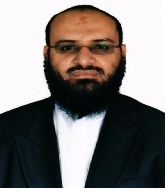
Biography:
Saeed M Alzabli has completed his MBBS from University of Aden and Arab Board of Pediatrics. He is an Assistant Consultant in Pediatric Nephrology at King Fahad Medical City.
Abstract:
Background: Dense deposit disease (DDD), a subtype of C3 glomerulopathy, is a rare disease secondary to hyperactivity of the alternative complement pathway with characteristic electron-dense deposits in the glomerular basement membrane on renal biopsy. Eculizumab, a monoclonal antibody prevent formation of the membrane attack complex through binding to C5 may be beneficial in its treatment. Reported cases are scarce, particularly in children.
Method: We report three pediatric patients with diagnosis of DDD on native kidney biopsy. All had acute kidney injury, hypertension, proteinuria >1 gram/day, and depressed level of C3. All Patients received methylprednisolone pulse therapy and Mycophenolate Mofetil. One patient required dialysis. Eculizumab was added early in two patients and in the third patient initiated after being on dialysis.
Results: In two patients, in whom Eculizumab started early, proteinuria and renal function improved significantly within weeks of treatment.C3 has been normalized in one patient and still depressed in the other. In the third patient who required dialysis, there was no response, she went into end stage renal disease (ESRD) and maintained on dialysis.
Conclusions: Eculizumab treatment was associated with reduction in proteinuria and improvement in renal function in two patients. Our findings are in agreement with previous reports of Eculizumab beneficial effect in DDD. Additionally, early initiation of Eculizumab may prevent progression to ESRD.
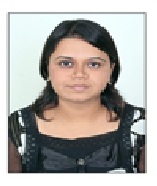
Biography:
Deepika Jain has completed her MD in New Delhi, India and continued her career in Medicine and then Nephrology in USA at University of Pittsburgh Medical Center. She is currently working in New Jersey as part of Hudson Kidney group affiliated with RWJ St Barnabas health care and CarPoint health systems. She has published several papers on health literacy on dialysis patients.
Abstract:
Health literacy is the capacity of an individual to understand information related to a disease in order to make an informed decision. In patients with kidney diseases, studies have reported increasing impact of limited health literacy on health outcomes. Our paper discusses current literature on health literacy in kidney diseases.
Abdulaziz Ahmed Salem Bamhraz
King Fahad Medical City, Saudi Arabia
Title: Saudi children have high prevalence of genetic related atypical hemolytic uremic syndrome and better renal recovery with eculizumab therapy
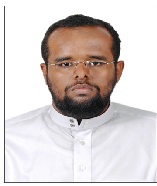
Biography:
Abdulaziz Ahmed Bamhrazhas completed his MBBS from Hadramout University of Science and Technology and have Saudi & Arab Board of General Pediatrics. I am doing my pediatric nephrology fellowship programm under Saudi council for health specialties at king fahad medical city -riyadh.
Abstract:
Background & Aim: Atypical hemolytic uremic syndrome (aHUS) is ultra-rare disease, characterized by microangiopathy hemolytic anemia, thrombocytopenia and renal impairment. Genetic defects that determine uncontrolled activation of the alternative complement pathway have been well documented, it accounts for about 40%–60% of the cases. In Saudi Arabia, there is up to 56% of consanguinity marriage resulting in higher prevalence of genetic diseases. We are reporting the experience of a tertiary care center in Saudi for children with aHUS who were treated their outcome and genetic background.
Methods: This is a retrospective study, from 2010 till May 2017 in a tertiary care center comparing children with aHUS who had received plasma therapy to those received Eculizumab therapy which was introduced at our center in 2014.
Results: 21 Saudi children who have similar demographic background diagnosed with aHUS, 12 (57%) of them showed complete renal and hematologic recovery (67% in the Eculizumab group versus 33% in plasma therapy group). Six cases (29%) reached End Stage Renal Disease (ESRD), four patients (67%) of these cases from the plasma therapy group; two patients (33%) from Eculizumab group reached ESRD, their genetic mutations were not related to complement dysregulation system. Two of the 21 cases (17%) developed disease recurrence while receiving plasma therapy but no recurrence developed after using eculizumab. 11 (69%) of the 16 cases who underwent genetic testing has identified gene mutations.
Conclusion: In our 21 cases with aHUS, eculizumab was superior to plasma therapy in inducing, maintaining remission, and associated with better renal recovery. Genetic mutations detected among our patients were higher than reported for this ultra-rare disease, most probably related to the high prevalence of consanguinity marriage.

Biography:
Shao-yu Zhang has completed her PhD from Université Paris-Est Créteil Val de Marne, France and Postdoctoral studies at INSERM, France. She is now working as a Researcher at INSERM, France. She has published more than 20 papers in the medical journals.
Abstract:
Paraneoplastic nephrotic syndrome is often a complication in patients with cancer, and various histologic lesions have been described in the kidney. We report the case of a 76-year-old woman who presented with a podocytopathy that was found to be associated with a small cell lung carcinoma (SCLC). One cycle of carboplatin-etoposide combination therapy led to resolution of nephrotic syndrome and remission of the lung carcinoma. C-Maf–inducing protein (CMIP) was overexpressed in both podocytes and cancer cells, but was not found in control kidney and lung tissue samples. CMIP also was absent in SCLC cells from 30 patients without nephrotic syndrome. Exposing cultured podocytes to a sample of our patient’s serum that was collected prior to chemotherapy led to disorganization of the podocyte cytoskeleton and induction of CMIP expression, which was not observed with control serum or our patient’s serum sampled after chemotherapy. These observations suggest that CMIP may play a significant role in SCLC-related podocytopathy and that a circulating factor likely induces its expression in the kidney.
